There is hardly a more beautiful voice on the world stage right now than that of Andrea Bocelli, the Italian tenor who wows audiences everywhere he goes with his enchanting performances and also with his courage: he has become an international sensation despite being totally blind. Bocelli’s legendary performance of The Lord’s Prayer, performed against the sensational background of the Mormon Tabernacle Choir, is our subject today. It is an experience of beauty like no other.
Immediately, though, we have to address one problem: the version of the Our Father sung by Bocelli is not the version in our Catholic Bible. Here is the text of the version that Bocelli sings:
Our Father which art in heaven, Hallowed be thy name. Thy kingdom come, Thy will be done in earth, as it is in heaven. Give us this day our daily bread. And forgive us our debts, as we forgive our debtors. And lead us not into temptation, but deliver us from evil: For thine is the kingdom, and the power, and the glory, for ever. Amen.
The phrases “…which art in heaven…,” “…Thy will be done in earth…,” and “debts…debtors” are all somewhat jarring to the modern ear. In this case, the wording differences are not theological but simply examples of how languages change over time.
This version also adds what is called the doxology (literally, “word of glory”) at the end, “For thine is the kingdom, and the power, and the glory, forever.” Catholics recite a form of that doxology in the Mass today, but it’s not in the Catholic bible, so we commonly refer to this version of the Lord’s Prayer as the “Protestant version.” Let me explain.
The Catholic vs. Protestant Our Fathers
We should probably start with the simple observation that the Bible we read today is a translation from the ancient languages in which it was written (Old Testament: Hebrew and Aramaic; New Testament: Greek). Fair enough.
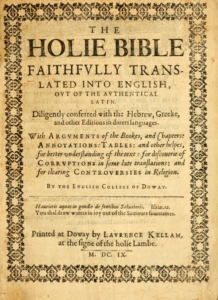
First Page of Douay-Rheims Old Testament
A Catholic priest named John Wycliffe translated parts of St. Jerome’s Latin Bible into Middle English in the 1300s.
William Tyndale followed the groundbreaking work of Wycliffe and published the first full translation of the New Testament into English (in 1526) using Greek manuscripts, not Latin.
The most authoritative Catholic translation, however, was the Douay-Rheims version, which was also translated from the Latin and published fully in 1610.
The reason Tyndale is important is because he is the source of many biblical phrases that have passed into common usage even to this day: “let there be light,” (Genesis 1:3), “the powers that be,” (Romans 13:1), “my brother’s keeper,” (Genesis 4:9), “the salt of the earth,” (Matthew 5:13), “a law unto themselves,” (Romans 2:14), “filthy lucre” (1 Timothy 3:3), “fight the good fight”(1 Timothy 6:12), and others.
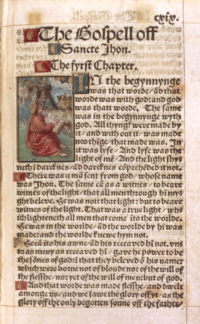
Tyndale Gospel of John
Since that time, however, many of the Greek manuscripts Tyndale used have been superseded by even older manuscripts such as the 4th century Codex Sinaiticus, which was discovered in a monastery in the Sinai desert in 1844. The older versions are considered the more original and have since been used exclusively for modern translations of the Bible.
When King James I of England sponsored his own translation of the Bible, Tyndale’s version made up as much as 80% of the King James Version (1611) and was the commonly accepted translation of the Bible for English-speaking Protestants until the mid-20th century.
The differences between the Catholic and Protestant Bibles are many and a subject for another time perhaps, but the simplest explanation of why the two Our Fathers are different is because the Catholic version was translated from the Latin, and the Protestant version was translated from the Greek. The Protestant version contains the doxology; the Catholic version does not.
What About the Music?
The King James Version is the only musical setting of the Lord’s Prayer that has received wide popular acclaim, which is why we can see a Catholic Bocelli singing the Protestant Our Father with the Mormon Tabernacle Choir! And believe it or not, the music for it was composed by a man who also wrote music for Disney cartoons.
His name was Albert Hay Malotte, an Episcopalian from Philadelphia. He wrote The Lord’s Prayer in 1935 during the Great Depression. As a Hollywood composer and musician, he worked on classics such as Gone with the Wind (1939) and won two Academy Awards for his musical settings for Disney animations (1939 and 1940).
Although he also composed numerous other popular and religious pieces, the only song he is remembered for is The Lord’s Prayer. His star seems to have faded into obscurity since then. No one I know has ever heard of him! Perhaps that in itself is proper to the subject. As the title says, it is the Lord’s Prayer, not his.
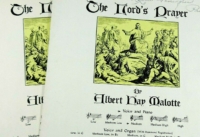 But we certainly owe Malotte a debt of gratitude for this magnificent piece of music and for giving the Lord great honor with his talent. (I also can’t help but wonder: Would a modern Disney composer write something like this today?)
But we certainly owe Malotte a debt of gratitude for this magnificent piece of music and for giving the Lord great honor with his talent. (I also can’t help but wonder: Would a modern Disney composer write something like this today?)
Malotte’s masterpiece was first recorded in the late ’30s and has been performed and recorded by many famous singers through the decades: Mario Lanza, Leontyne Price, Marilyn Horne, José Carreras, and even Britain’s Got Talent star, Susan Boyle, to name a few.
No performance, however, rivals that of Andrea Bocelli when he sang it with the Mormon Tabernacle Choir in 2009. It’s one for the ages.
The Wonder of Andrea Bocelli
When Bocelli blasted onto the world stage in the mid-90s, I remember seeing him perform on television and marveling that Italy had again produced another world-class tenor. In the 1920s, Enrico Caruso was the first Italian tenor to record an album of his voice, and course, no Italian tenor – in fact, no musician – had greater international appeal than Luciano Pavarotti in the late twentieth century.
Yet, Bocelli may surpass even these greats in worldwide popularity. His voice rivals both of his countrymen in quality and power, and the fact that he has overcome a major handicap to achieve international stardom adds something to his appeal. (He was 12 years old when a soccer accident made him totally blind.) To date, he has released forty-six albums and remains continually on tour sharing his gift of music with the world.
Bocelli’s tour schedule from now through the summer of 2022 includes concerts in Finland, Netherlands, Czech Republic, Iceland, Israel, Italy, Mexico, California, Texas, Oklahoma, New Jersey, UK, Spain, Poland, and Ireland. And many of these states and countries include concerts at multiple venues. He never seems to run out of energy.
Andrea Bocelli also shocked the world in 2008 with an amazing pro-life witness that he gave spontaneously while sitting at a piano recording a video for a charity. Apparently, he didn’t realize at the time how powerful his words were, but this is what he said:
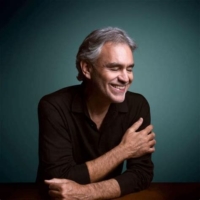 A young pregnant wife has been hospitalized for a simple attack of appendicitis. The doctors had to apply ice to her stomach and when the treatments ended, the doctors suggested that she abort the child. They told her it was the best solution because the baby would be born with some disability, but the brave young wife decided not to abort and the child was born. That woman was my mother, and I was the child. Maybe I’m partisan, but I can say it was the right choice.
A young pregnant wife has been hospitalized for a simple attack of appendicitis. The doctors had to apply ice to her stomach and when the treatments ended, the doctors suggested that she abort the child. They told her it was the best solution because the baby would be born with some disability, but the brave young wife decided not to abort and the child was born. That woman was my mother, and I was the child. Maybe I’m partisan, but I can say it was the right choice.
Bocelli has stood by his amazing testimony in the face of some harsh criticism, and we cannot help but admire him for it.
The Performance
The next year, the Mormon Tabernacle Choir asked him to perform The Lord’s Prayer with them as part of a PBS Christmas special, and to their great surprise, he agreed. It was reported that in between practice sessions Bocelli chatted with choir members and even performed a spontaneous rendition of the Ave Maria for them. I wish I could have been there!
The link below will take you to a video of his amazing performance with the Mormon Tabernacle Choir. (You can skip the one minute introduction if you like.) But be prepared for goosebumps when he reaches the doxology. The “Amen” at the very end is spectacular: he sustains his breath on that final word for 26 full seconds! (I’ve tried that. It’s humanly impossible.)
As we listen, may we offer the Lord’s Prayer as a fervent petition for the unity of all Christians and for the salvation of our whole suffering world.
[Note: This article is a reproduction of the Sacred Windows Email Newsletter of 4/03/22, so it does not end with the regular Soul Work section. Please visit our Newsletter Archives.]
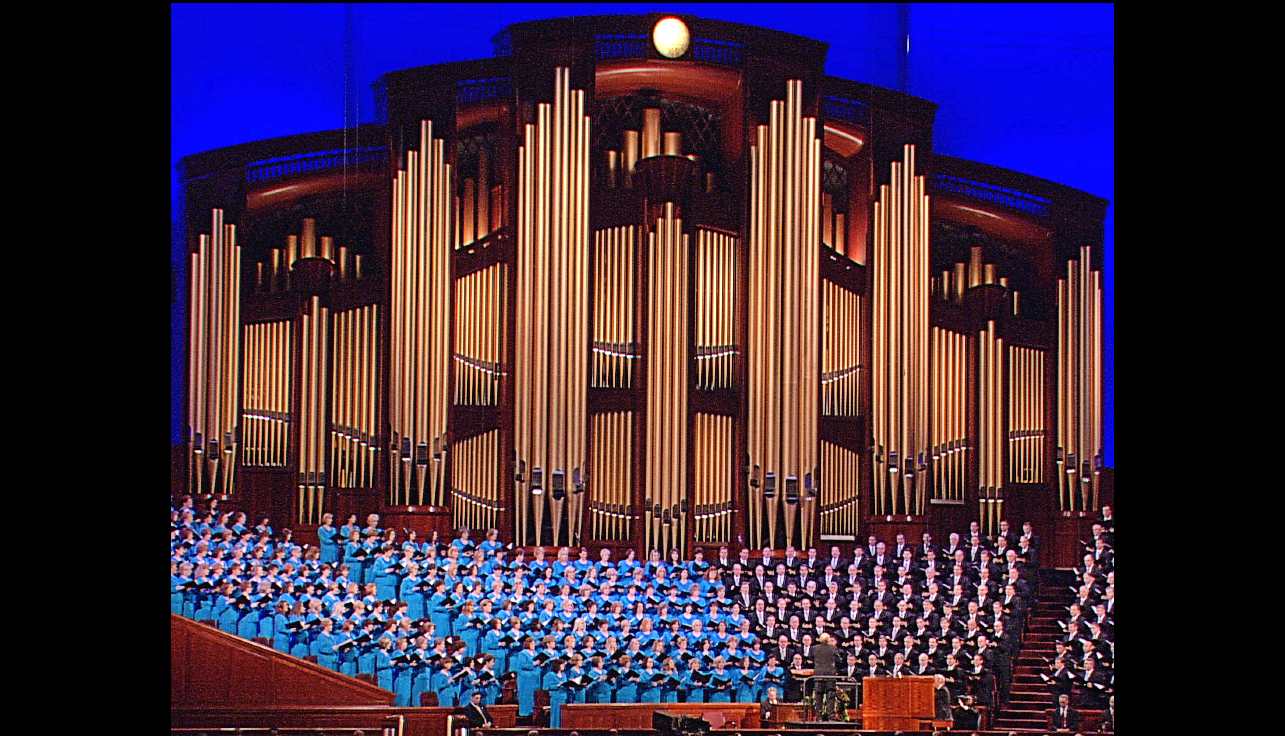

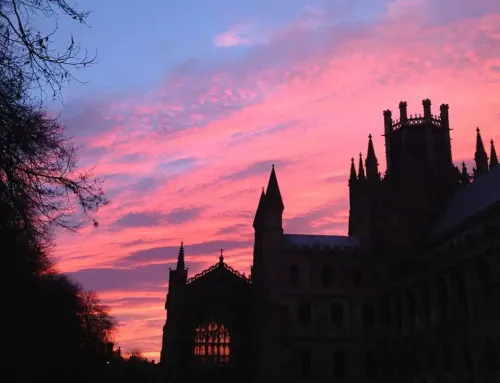
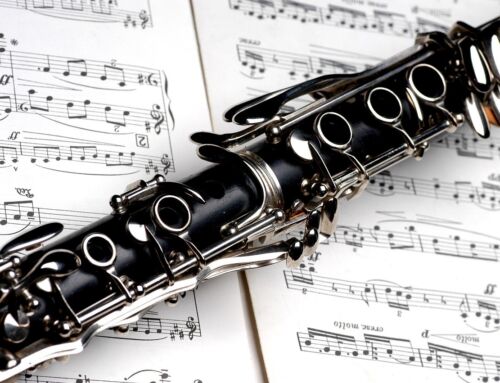
Leave A Comment